Uncover Chinon's vibrant flavors and culinary gems with our expert guides. Plan an unforgettable trip now!
Read more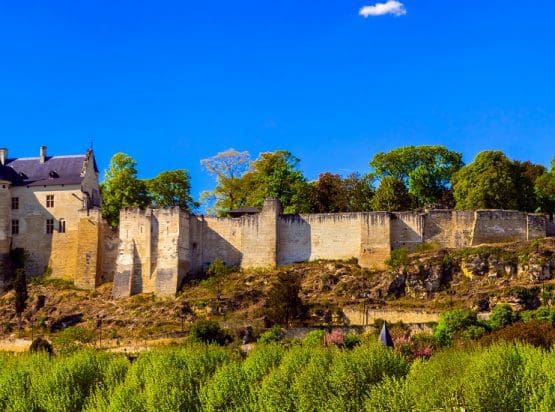
EXPLORE ALL OUR LOIRE VALLEY WINE REGIONS GUIDE
Last updated: April 4, 2025
Sancerre was THE benchmark for fragrant and profound Sauvignon Blanc for many decades. Successive generations have passionately maintained traditional practices to create age-worthy and structured whites that turn a seafood meal into a banquet. However, after New Zealand Sauvignon Blanc exploded onto the scene in the 1980s, winegrowers in Sancerre felt surplus to requirements.
How could they compete with such exotic fruit and intense aromatics? Meanwhile, the world quickly fell in love with Kiwi Sauvignon and its unashamedly concentrated style.
Yet, today, no self-respecting wine list or merchant can omit Sancerre – you may ask why? The world is full of brilliant examples of the Sauvignon Blanc grape. But there is magic in Sancerre that is rarely, if ever, replicated. The magic occurs in the vineyard: ancient calcareous soils yield wines of great complexity, finesse, and elegance. In certain years, growers achieve flavors as highly valued as any on earth. These wines exist to serve the consumer who desires subtle nuance and depth over raw power – a true connoisseur.
Discover More About French Wine
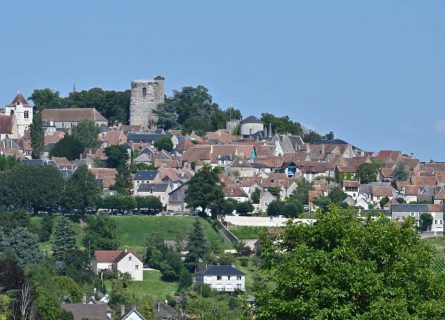
Sancerre’s undulating landscape has been a viticulture center for many centuries. In the pre-Roman era, a Celtic tribe known as the Gauls settled in this section of the Upper Loire Valley. This proud civilization eventually lost its independence to Caesar’s armies in 52 BC. The strategic and economic value of Sancerre – and its neighbor Pouilly-Fumé – were immediately apparent to France’s new overlords.
The Romans planted scores of vines along the river banks and shipped them to markets using a highly sophisticated river transport infrastructure for the time. This lucrative business model thrived for over four hundred years, ending after the collapse of the Western Roman Empire in AD 476.
However, a new force in European politics seized control in the 5th century. They were the Merovingian and Carolingian Franks, a culture of fierce warriors who ejected the Visigoths from Gaul with incredible speed. At the height of their power and influence, Pope Leo III crowned Charles the Great, a Frankish king, Holy Roman Emperor in 800AD. Yet in the 9th century, they had to build many fortresses along the banks of the Loire to repel attacks from Norsemen warriors who hailed from Scandinavia.
Nevertheless, the progenitors of Norman culture established a permanent base in northwestern France, launching the invasion of England in 1066. The English attacked cities like Sancerre several centuries later during the Hundred Years’ War. Edward of Woodstock destroyed many important buildings, including the Augustinian Abbey in Saint Satur, in the 1300s.
Monastic Influence and Religious Turmoil
Meanwhile, an order of Benedictine monks became heavily involved in growing grapes in Sancerre in the Middle Ages – this pattern was seen across Europe as the Catholic Church became true oenophiles! At the same time, religious turmoil had engulfed France due to the rise of Protestantism and the ensuing Wars of Religion.
In 1572, a group of Huguenots (protestants) took refuge in the fortress at Sancerre during the great Reformation. Yet the Catholic forces of Charles IX attacked them after the king was refused entry. The rebels managed to hold out for over seven months before Charles abandoned the attack. As compensation, he received 2000 liters of wine taken from the cellars of Sancerre.Realpolitik indeed.
Transition from Pinot Noir to Sauvignon Blanc
Yet the barrels handed over to the astute monarch contained no Sauvignon Blanc. Before the 20th century, Pinot Noir dominated the vast majority of the acreage, producing light, acidic, and often anemic wines that would horrify today’s aficionados of the grape.
The Rise of Sauvignon Blanc and AOC Recognition
The late 1800s outbreak of phylloxera, a destructive louse that killed vines across the Loire Valley and bankrupted growers, served as the catalyst for Sauvignon Blanc’s ascendancy. Eventually, however, growers found a solution: they regrafted the vines onto American rootstock, which had developed a resistance to the disease.
Sauvignon Blanc proved very amenable to regrafting (unlike the capricious Pinot Noir), so that variety became widespread in the zone. In 1936, one year before Pouilly-Fumé, the region received its AOC status. They remain the finest sources of Sauvignon Blanc wines in Europe.
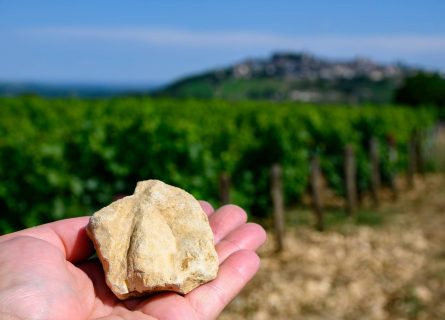
Despite the proliferation of excellent wines from across the New World, few would argue that Sauvignon Blanc has not reached its apogee in the vineyards of Sancerre. They have planted over 3000 hectares of vines in the appellation at the eastern end of the lower Loire Valley, southeast of Orleans.
A majestic sea of vines stretches along the west side of the river bank, directly opposite the vineyards of Pouilly-Fumé. Today, over 13 villages and three pretty hamlets have the right to produce Sancerre. The growing conditions are very favorable: mineral-rich soils, cold winters, and warm, dry summers.
Diverse Soil Types and Wine Styles
The region has long celebrated its high-potential terroir known as ‘terre blanches’ – white limestone soils with a large percentage of clay. These tend to produce the most structured and age-worthy wines of the appellation. Predominantly, the western part of the region contains such soils, while the slopes across the river from neighboring Pouilly and the east of the town tend to have a higher proportion of ‘silex,’ which is clay-flint. The differences can be subtle or very noticeable; Sancerre varies from full-bodied and concentrated to delightfully fragrant and softly structured. This is far from a homogeneous white wine style.
The Debate on Grand Cru and Premier Cru Classifications
But does Sancerre boast a Grand Cru? Are there some vineyards that qualify for Premier Cru status? The region has avoided going down the terroir classification route, as exemplified by Burgundy. Yet insiders will tell you that two of the best sites in the region are the pebbly, calcareous ‘Chene Marchand’ in the village of Bue and the ‘Monts Damnes’ in the village of Chavignol. Provided the grower is committed to quality, wines produced from these vineyards should be incredibly refined, structured, and complex. However, there are currently no plans to undertake a codified ranking of Sancerre’s best vineyards. The politics of such an undertaking are simply too fractious and controversial.
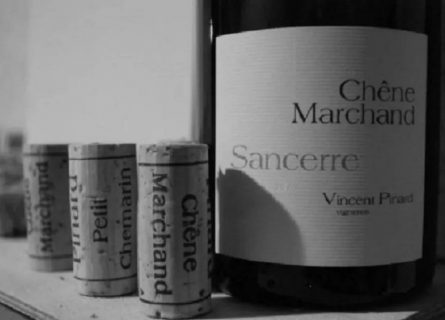
Except for the large firm Domaine de Ladoucette and a few cooperatives, Sancerre is dominated by family-run businesses and humble establishments. Even today, there are rarely expensive laboratories or new French oak barrels resting in the cellar; visitors looking for Norman Foster-designed wineries and glass-fronted tasting rooms will be disappointed. Yet, it would be inaccurate to claim that nothing has changed in the appellation over the past 25 years.
Modernization and Quality Improvement
While Sancerre lacks the glamor and sheen of Napa Valley—or Stellenbosch—it has nonetheless seen real investment in the 21st century, raising quality standards across the board. For example, few quality-conscious producers use mechanical harvesting, and they handle the grapes (and juice) with far greater care and sensitivity than in the 1980s.
Many wineries now vinify their Sauvignon Blanc in stainless steel at low temperatures, avoiding malolactic fermentation in warmer years to preserve freshness. They sometimes bottle the wines without filtration in the year after the harvest – or sometimes before.
Sancerre is always bone dry unless we’re talking about the rarely-seen late-harvest dessert wines. It is also typically unoaked, delightfully refreshing, and very approachable from the word go.
Flavor Profile and Oak Aging
Indeed, the best Sancerre is crammed with flavor and intensity, yet it differs significantly from a typical glass of Marlborough Sauvignon. The fruit will be more refined and multifaceted – tropical notes are only found in the warmest of vintages, unlike New Zealand. The texture should be sublime, and the finish exceptionally long. The best examples will develop in the bottle for many years, taking on flavors of buttered toast, lanolin, and stone fruit.
A small selection of cuvées, including the best wines of Didier Dagueneau, Vincent Pinard, and Alphonse Mellot, are aged in new French oak. Their success indicates that Sancerre, like white Bordeaux, can sing if the oak is judiciously unemployed. Instead of smothering the fruit, it adds another dimension to this wonderful wine.
Rising Popularity of Pinot Noir and Sancerre Rosé
Due to the immense popularity of the grape, a growing number of wineries are also producing some very high-quality Pinot Noir. Nevertheless, the Kimmeridgian clay/limestone marls found in certain parts of the appellation are ideally suited to cultivating Pinot Noir, perhaps the world’s most capricious variety! The best examples invoke Volnay or perhaps a Beaune Premier Cru.
The aroma, mouthfeel, and crisp red fruit suggest that this glass ‘must’ be from Burgundy. On occasion, the most ambitious winemakers beat the growers of the Cote de Beaune at their own game. The only key difference is the price – red Sancerre rarely commands the same premium as top-end Burgundy. But, it is becoming more expensive as the supply of affordable Burgundy diminishes. Sancerre rosé, meanwhile, can be absolutely beautiful. It’s just a shame so little is made.
If one change has dominated the last 40 years, it is undoubtedly a shifting emphasis from place to grape. In Europe, the name of a wine, with few exceptions, was its place of origin. The New World saw things very differently; in Australia, New Zealand, Chile, South Africa, and the US, grape varieties were made the universal key.
This fact alone has dramatically altered the way many enthusiasts engage with wine. But, more importantly, it has given winemakers a decisive advantage over their competitors in the Old World.
New World’s Approach to Wine Marketing
Thus, a thorny problem presented itself to the vignerons of Sancerre. In the late 20th century, growers could only watch as nations like New Zealand, with their varietal-led marketing, challenged and usurped what they saw as their birthright. Sancerre, meanwhile, has long been anchored by proud traditions and appellation customs: producers have never recognized the value of advertising the grape behind the label.
Indeed, it is taken for granted that white Sancerre is 100% Sauvignon Blanc. Unfortunately, this enabled New Zealand and other countries, such as Chile, to gobble up France’s market share and install themselves as benchmark growers of pungent, gooseberry-scented Sauvignon.
Resurgence and Return to Classic Styles
Yet Sancerre is in resurgence today, buoyed by a renewed interest in classic wine styles and appellations. It was perhaps inevitable that the pendulum would swing back toward alluring characteristics such as minerality, sense of place, and balance; unadulterated exotic fruit can become dull. Sommeliers understand this all too well and are shunning the most egregious examples of New World excess in favor of the flinty, smoky perfume of a great Loire Sauvignon.
Of course, there will always be room for easy-to-decipher labels and intensely fruity wines. But the curious oenophile, ever-excited by points of difference and authenticity, is increasingly eager to delve into the mysteries of terroir.
The sauvignon blanc grape varietal, originally from the Bordeaux region of France, is now one of the world's most loved white varieties.
Find out morePinot noir is a light-bodied red wine varietal closely related to the Vitis vinifera grape and produces the most sought-after red wines in the world.
Find out more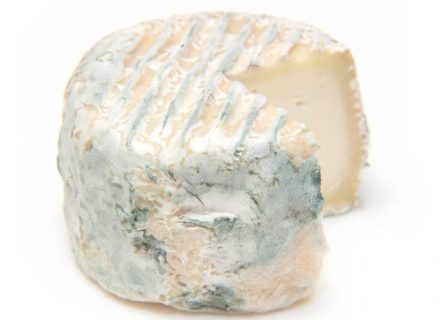
What is Sancerre’s greatest contribution to the world of fine dining? Many would point to the village of Chavignol, just to the northwest of Sancerre, where the supremely delicious Crottin de Chavignol is made. These little cylinders of pungent goat’s cheese, high in acidity and salt, have long been a fantastic match for the aromatic whites of the region. You’ll find it in all the best restaurants in Sancerre – begin with St. Jacques scallops, follow with market-fresh poisson de jour, and finish with the creamiest goat’s cheese on this side of the Atlantic.
A Gastronomic Guide to the Cuisine of the Loire: Read more
If you would like us to customize an exclusive luxury tour, contact us and let us know your travel plans. We offer luxury food and wine tours for private groups of a minimum two guests. In addition, all of our private, chauffeured tours are available year-round upon request.

